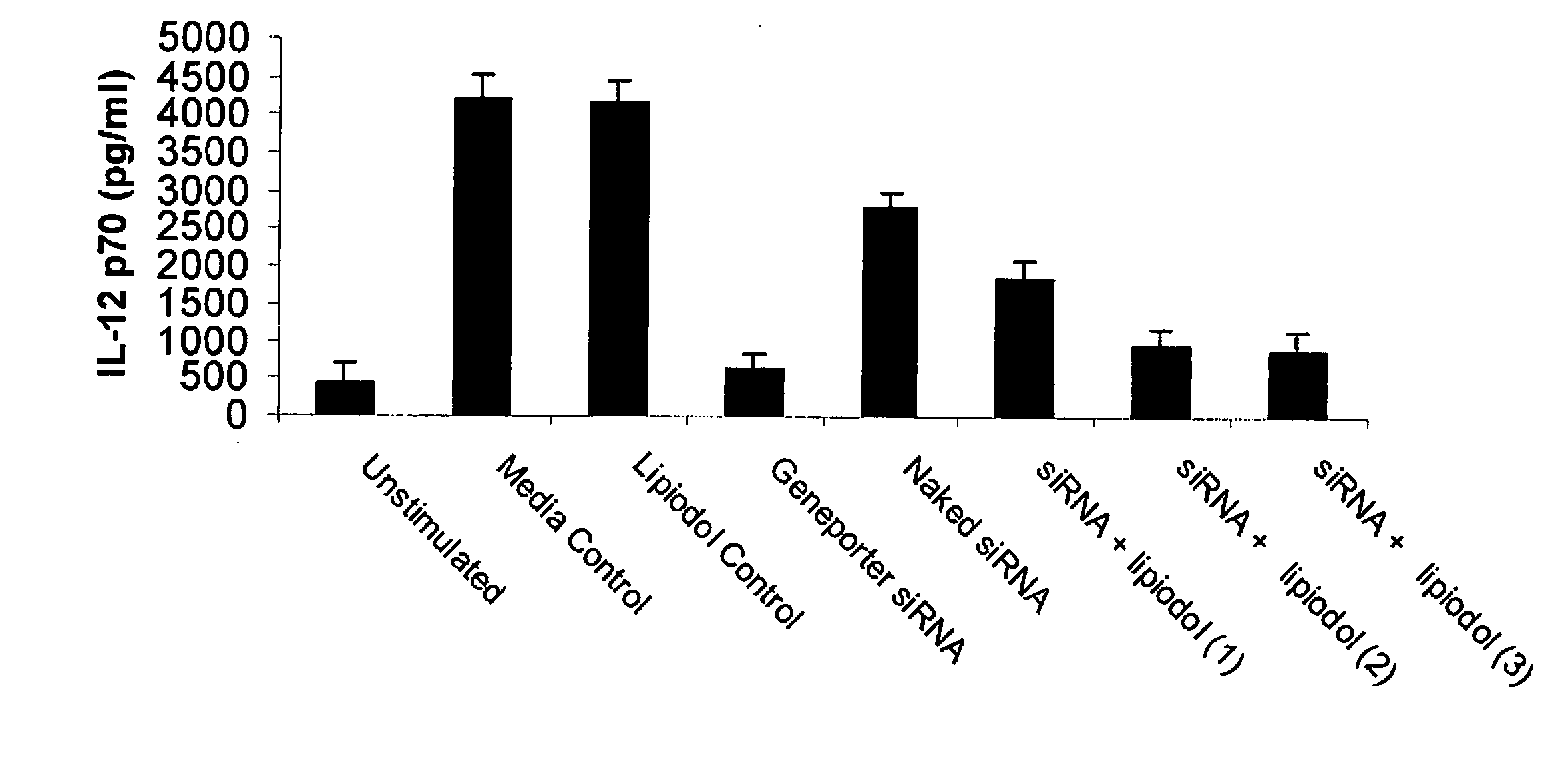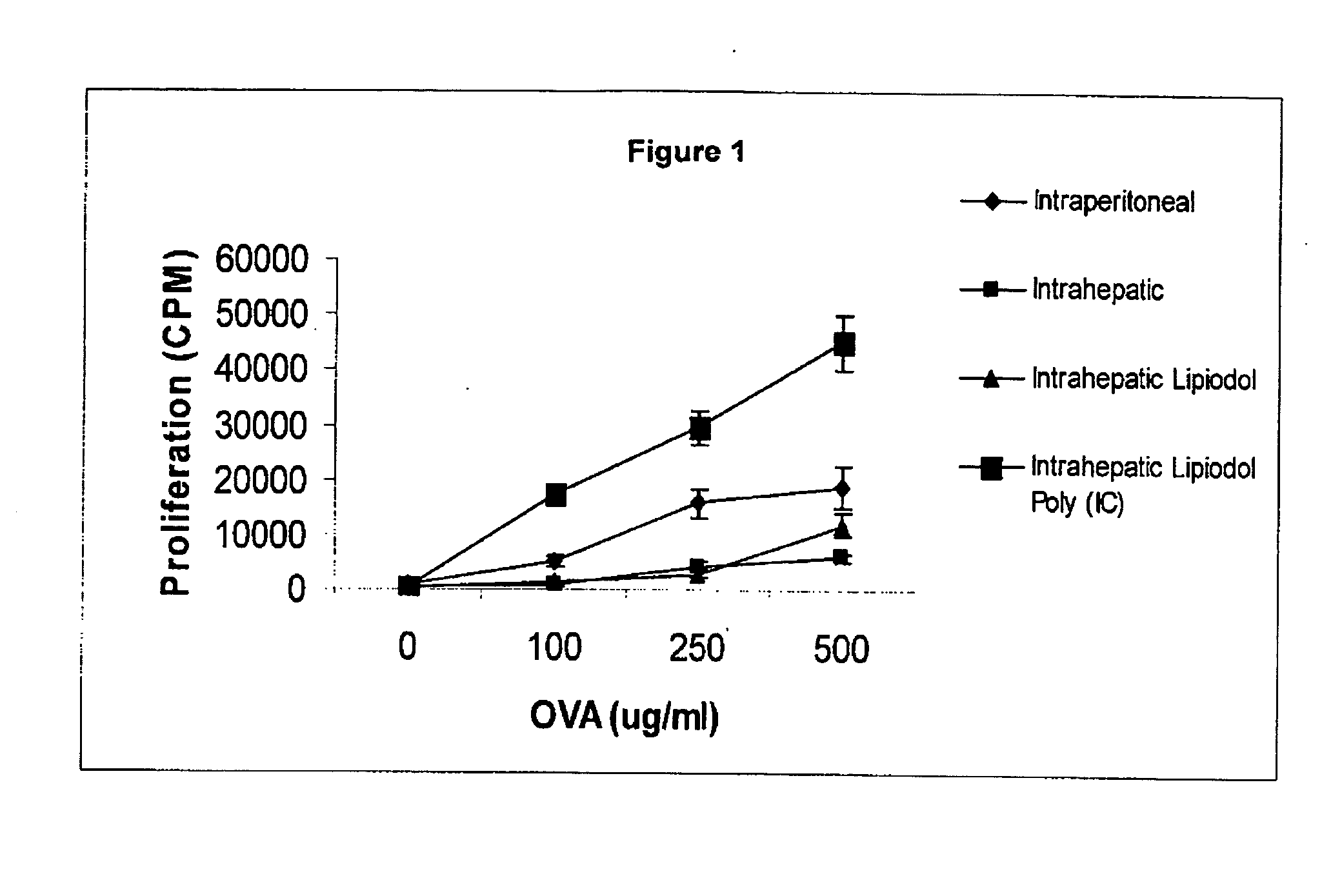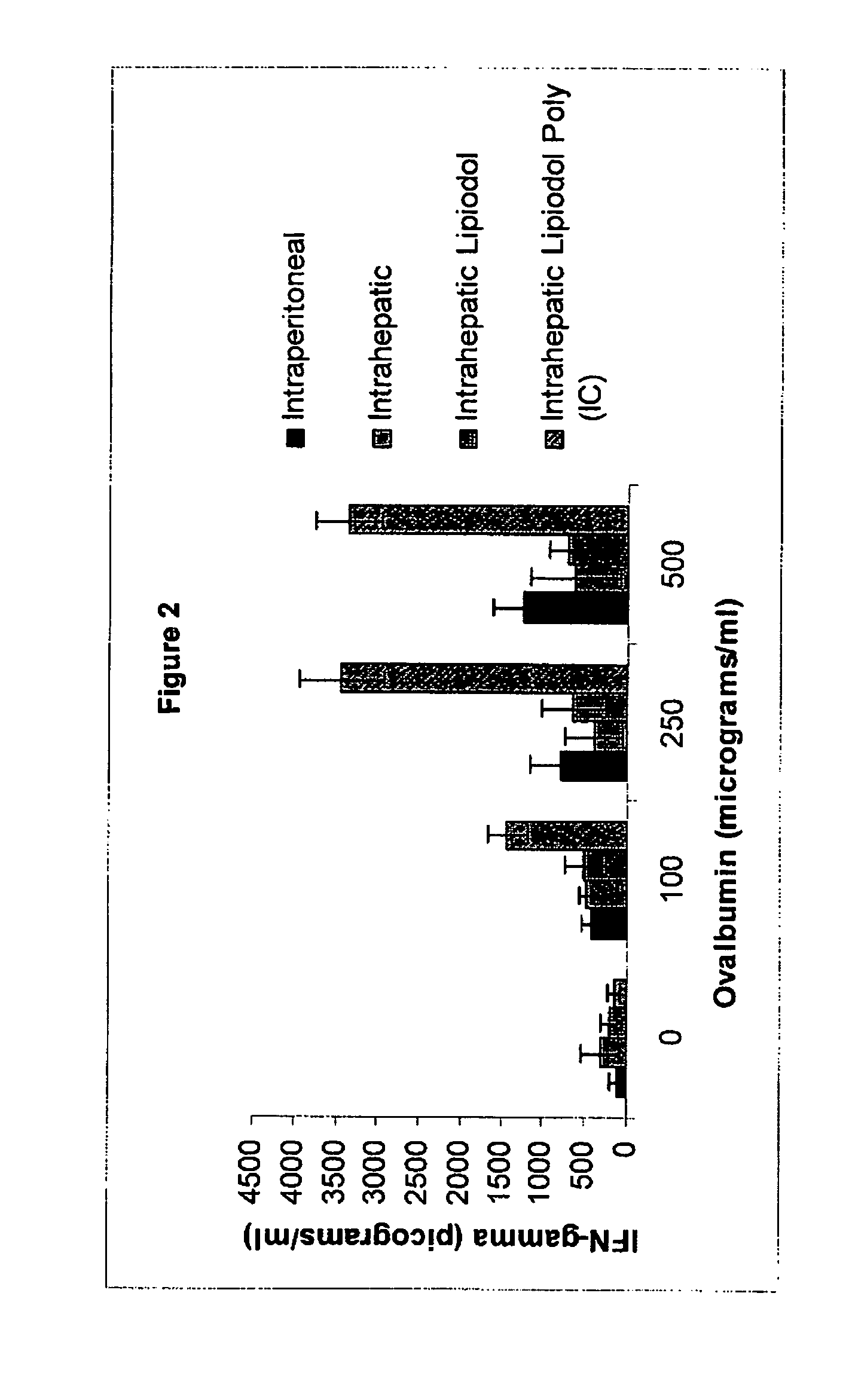Transcatheter tumor immunoembolization
a tumor and tumor technology, applied in the field of tumor immunotherapy, can solve the problems of ineffective clinical practice, inability to appropriately prime immune responses in the local microenvironment for systemic effects, and intrinsic tolerogenic nature of natural environment,
- Summary
- Abstract
- Description
- Claims
- Application Information
AI Technical Summary
Benefits of technology
Problems solved by technology
Method used
Image
Examples
example 1
Poly (I:C) Administration Increases Proliferative Response to Pvalbumin After Intrahepatic Immunization
[0071] Four groups of BALB / c mice (The Jackson Laboratory, Bar Harbor, ME) of 6-8 weeks of age consisted of Group 1 intraperitoneal administration of ovalbumin, Group 2 intrahepatic administration of ovalbumin, Group 3 intrahepatic administration of ovalbumin together with lipiodol, and Group 4 intrahepatic administration of ovalbumin together with lipiodol and Poly (I:C).
[0072] Mice in Group 1(5 mice per group) where administered one hundred micrograms of ovalbumin (grade V; Sigma Aldrich) dissolved in 0.1 mL of 0.9% saline solution intraperitoneally. The following procedures were performed for mice receiving intrahepatic immunization: Mice were anesthetized with an intraperitoneal injection of ketamin at a concentration of 0.075 mg / g and medetomidine 0.005 mg / g (Sigma Aldrich, St Louis, Mo.). A midline abdominal incision was made, and the viscera were exposed. One hundred micro...
example 2
Poly (I:C) Administration Increases Interferon Gamma Response to Ovalbumin After Intrahepatic Immunization
[0074] The experimental conditions of the above example were duplicated with the purpose of identifying whether the heightened proliferative response observed in the Group 4 treated mice could also be seen at the level of cytokine production. Indeed the association between interferon gamma production and cytolytic / cytoinhibitory function of T cells is established in the art. In order to detect cytokine production supernatants were harvested from the tissue culture plates at 48 hours of stimulation with ovalbumin and analyzed by interferon gamma ELISA (Quantikine murine IFN-γ ELISA; R&D Systems, Minneapolis, Minn.). As illustrated in FIG. 2, a profound upregulation of interferon gamma secretion was observed in T cells responding to ovalbumin in vitro. This indicates that the ability of the lipiodol-Poly (IC) mixture to potentiate immune responses is not restricted to proliferati...
example 3
Poly (I:C) Administration Increases DTH Response to Ovalbumin After Intrahepatic Immunization
[0075] The experimental conditions of the above example were duplicated with the purpose of identifying whether the heightened proliferative response observed in the Group 4 treated mice could also be seen at the level of delayed type hypersensitivity response. Measurement of the footpad thickness (with skinfold calipers) was performed 24 hours after the subcutaneous footpad injection of ovalbumin (50 μg of heat-aggregated ovalbumin in 10 μL of saline. The footpad injection was performed 14 days after the intraperitoneal boosting described in Example 1. As observed in FIG. 3, a significant increase in footpad swelling was observed in the mice having received the lipiodol-Poly (IC) intrahepatic immunization. This indicates that the potentiation of immunity was not limited to proliferative and cytokine responses, but also to functional inflammation.
PUM
| Property | Measurement | Unit |
|---|---|---|
| Concentration | aaaaa | aaaaa |
| Concentration | aaaaa | aaaaa |
| Cell death | aaaaa | aaaaa |
Abstract
Description
Claims
Application Information
 Login to View More
Login to View More - R&D
- Intellectual Property
- Life Sciences
- Materials
- Tech Scout
- Unparalleled Data Quality
- Higher Quality Content
- 60% Fewer Hallucinations
Browse by: Latest US Patents, China's latest patents, Technical Efficacy Thesaurus, Application Domain, Technology Topic, Popular Technical Reports.
© 2025 PatSnap. All rights reserved.Legal|Privacy policy|Modern Slavery Act Transparency Statement|Sitemap|About US| Contact US: help@patsnap.com



